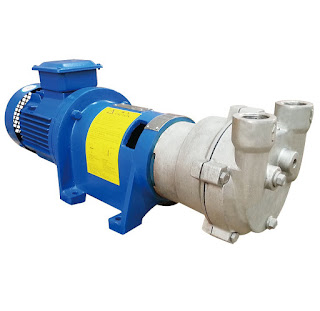ALUMINUM ALLOY BRAZING PROCESS
WHAT KIND OF TECHNOLOGY DOES ALUMINUM ALLOY BRAZING HAVE?
(1) FLAME BRAZING
Flame brazing is commonly used in combination of small parts, small batches of production and aluminum. You can use an air-gas or oxygen-gas torch. The adjusting torch flame is a weak reduction flame. The heat is applied to the local position where the connection is required until the solder and solder melt and wet the base surface. As the solder melting point is close to the melting point of the base metal, special care should be taken to avoid over-heating the base metal.

(2) BRAZING IN FURNACE
When using solder, aluminum alloy can be brazed in the furnace under air atmosphere, but it is better to use controlled atmosphere. As the moisture content is eliminated in the drying process, no injection welding can be achieved. Dew point at 15 ℃ air or nitrogen atmosphere, can use special non-corrosive solder. In argon gas and vacuum conditions, can not use injection brazing, must maintain the furnace temperature uniformity, solderer pieces of the temperature is not more than 15 ℃.

(3) BRAZING IN AIR FURNACE
The brazing furnace used for brazing aluminum alloy has a lot in common with the heat treatment furnace used for aluminum alloy. These devices are designed to be under 650 ℃ temperature range, temperature control accuracy + / - 3 ℃ (such as 650 ℃ + 3 ℃). The furnace can be heated by gas or fuel and electricity. The air in the furnace is forced to be ventilated to achieve uniform temperature in the furnace by improving the rate of heat conduction. The recommended process is to adjust the furnace cycle 10 times, heat the component to the brazing temperature, and keep it hot for another 30~120s. Too long at this temperature will result in harmful diffusion, corrosion or other undesirable solder brazing reactions.

(4) INERT GAS BRAZING
All designed furnaces can be brazed with inert gas, and the water molecules must be removed from the surface of the workpiece by a combination of heating and pumping before the romantic gas flushing system is used. The inert gas atmosphere is sufficient for brazed soldering. Inert gas must be below the dew point - 51 ℃, in order to reduce costs, often use nitrogen, can also make use of nitrogen and chlorine gas, from the perspective of preventing oxidation can use hydrogen, but the risk is too big, the heat conduction and convection is the main way of heat exchange.
(5) VACUUM BRAZING
Aluminum alloy can be brazed in vacuum. Furnaces that achieve a vacuum of 10-6~10-5 are often used in combination with magnesium, which ACTS as a denaturator that absorbs gaseous oxygen, oxide film, and aluminum. The brazing in furnace is mainly used for brazing of heat exchanger. The joints of main structural parts are vertical. Vacuum brazing is not recommended.
(6) BRAZING OF DISSIMILAR METALS
Aluminum can be brazed with other metals. Titanium, nickel, cobalt and beryllium can be directly brazed with aluminum; Other alloys can improve the fluidity of the alloy by preplating nickel to protect the surface from oxidation. Copper and brass cannot be soldered directly with aluminum and aluminum alloys.




评论
发表评论